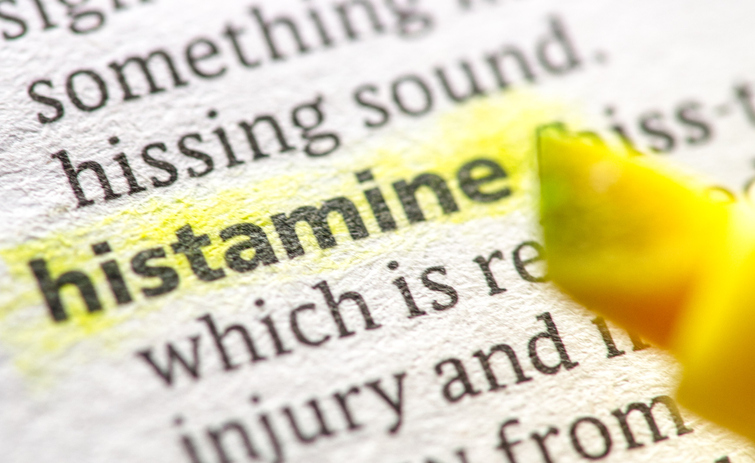
Mast Cells & Mold: A Wicked Duo
Mast Cells & Mold – A Wicked Duo
Mold, often an uninvited guest in our homes and offices, holds more power over our health than we might think. It’s not just unsightly, smelly, and damaging to structures–it can also significantly impact human health, mainly through stimulating mast cell activity.
If you’ve been dealing with rashes, digestive issues, migraines, fatigue, and other weird symptoms that have no rational explanation, mold might be to blame as the root culprit. In particular, you could be dealing with Mast Cell Activation Syndrome (MCAS).
Mast Cells: Guardians of the Immune System
Mast cells are part of the body’s immune system. They are most well-known for their role in allergic reactions. These cells are found in tissues throughout the body and at the junction point where your body interacts with the external world, including the skin, lungs, and digestive tract.
Each mast cell contains 50–200 large granules filled with histamine and other chemicals that get released in response to specific triggers, including allergens like mold spores.
How Mold Exposure Activates Mast Cells
Mold is a type of fungus that loves living in damp, humid environments, like showers, basements, mattresses, and kitchens. Mycotoxins from mold can even be found in some food sources. You might be blissfully unaware of ingesting mold, only to have a reaction later on.
If you have a mold allergy, exposure to mold spores can lead to the activation of mast cells. When you inhale mold spores or accidentally make contact with them, you might trigger an immune response.
When mast cells encounter an allergen, they release histamine and other substances. Histamine increases blood vessel permeability, allowing other immune cells to access the affected area. This response can lead to symptoms commonly associated with allergies, such as itching, swelling, redness, and respiratory issues.
Symptoms of Mold-Related Mast Cell Activation
So, how can you tell if your symptoms are caused by mold-related mast cell activation or some other trigger? That’s not always easy to answer, as the symptoms of mold-related mast cell activation can vary depending on your immune response and how long you were exposed to mold.
Common symptoms include:
● Respiratory issues such as sneezing, coughing, wheezing, and difficulty breathing
● Skin reactions like hives, itching, or rashes
● Watery, itchy eyes and runny nose
● Fatigue and headaches
● Racing heart
● Abdominal pain
● In women, intense PMS symptoms
● In severe cases, anaphylaxis, a life-threatening reaction that requires
immediate medical attention
MCAS is not something that will go away on its own. If left untreated, MCAS can wreak havoc on your health, eventually leading to chronic illnesses that can significantly affect your quality of life.
Keeping Mold Allergies in Check
If you’re sensitive to mold, you first need to manage your exposure to mold. In addition to removing any apparent signs of mold from your home, take the following steps to minimize your mold exposure:
● Reduce indoor humidity levels to below 50% to discourage mold growth
● Fix leaks and improve ventilation in damp areas (e.g., basement, bathroom, kitchen)
● Regularly clean areas where mold tends to accumulate
● Use an air purifier with HEPA filters to reduce airborne mold spores
Environmental controls might not be enough to manage your mold allergy, especially if you experience symptoms outside the home. In some cases, taking medications like antihistamines can help manage symptoms by blocking the effects of histamine released by mast cells. In more extreme cases, your doctor might recommend allergen immunotherapy (i.e., allergy shots) to reduce your sensitivity to mold spores over time.
Get Tested for Mold Exposure
If you’re dealing with any of the above symptoms, you might be dealing with mold exposure. The best way to find out what’s causing your symptoms is with a mycotoxin test. The MycoTOX screens for 11 mycotoxins from 40 mold species in just one urine sample. Testing is easy and confidential, with results in as little as 10 days (not guaranteed).
Get your mycotoxin test kit today to identify your mold exposure and get recommendations for effective detoxification treatments. Click here to order your mycotoxin test kit!
The information provided in this blog is intended solely for informational and educational purposes. It should not be considered medical advice, diagnosis, or treatment. Please discuss specific health conditions and concerns with your health care professional.
Thank you for reading! Your path to enhanced cellular wellness starts here.
Health Disclaimer: It is recommended the reader of this site consult with a qualified health care provider of their choice when using any information obtained from this site, affiliate sites and other online websites and blogs. Please consult your health care provider before making any healthcare decisions or for guidance about a specific medical condition.
Sources:
Fong, M., & Crane, J. S. (2023, May 1). Histology, mast cells – statpearls – NCBI bookshelf. Stat Pearls. https://www.ncbi.nlm.nih.gov/books/NBK499904/
Introduction. Mast Cell Activation Syndrome. (n.d.). https://mcas.ie/
Kritas, S. K., Gallenga, C. E., & Ovidio, C. D. (2018). Impact of mold on mast cell-cytokine immune response. Journal of biological regulators and homeostatic agents. https://pubmed.ncbi.nlm.nih.gov/30043558/
Krystel-Whittemore, M., Dileepan, K. N., & Wood, J. G. (2015, November 27). Mast Cell: A multi-functional master cell. Frontiers. https://www.frontiersin.org/articles/10.3389/fimmu.2015.00620/full